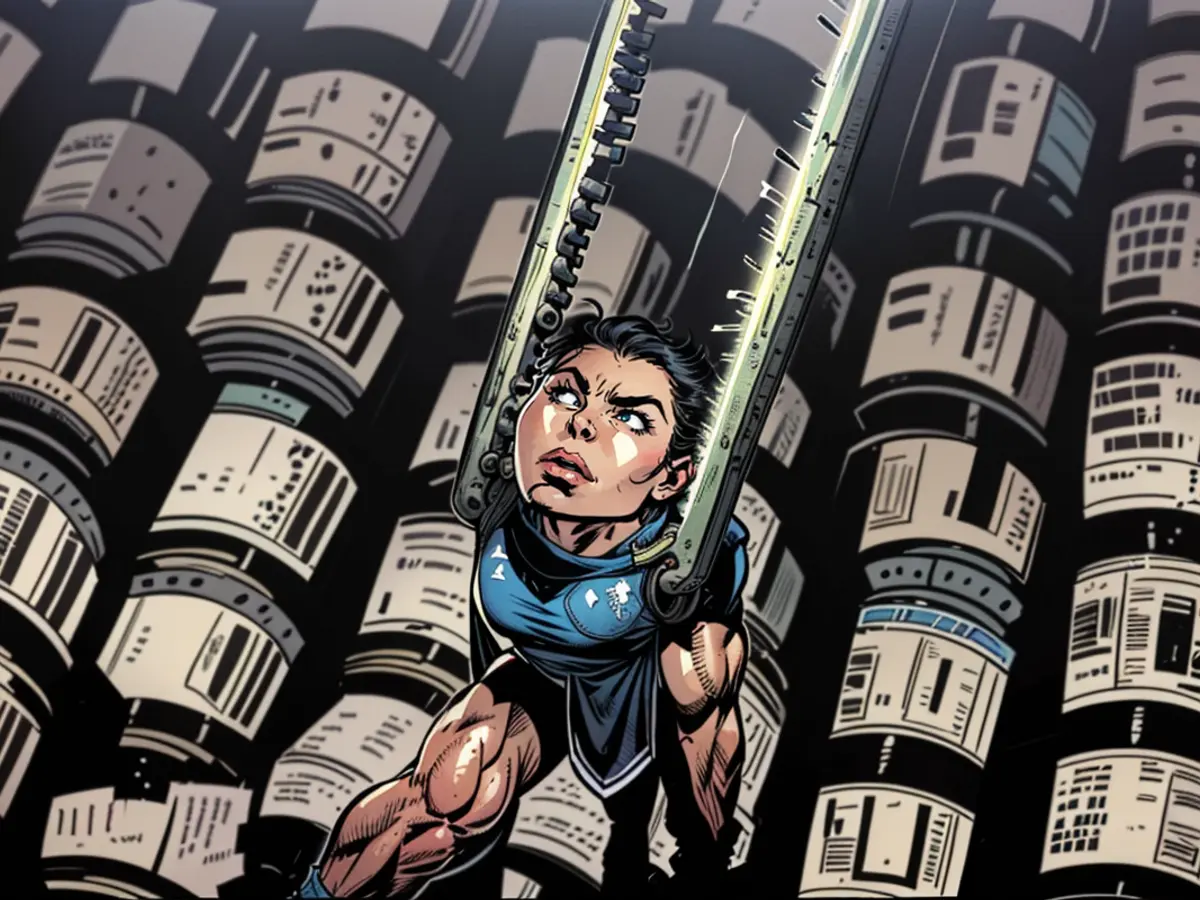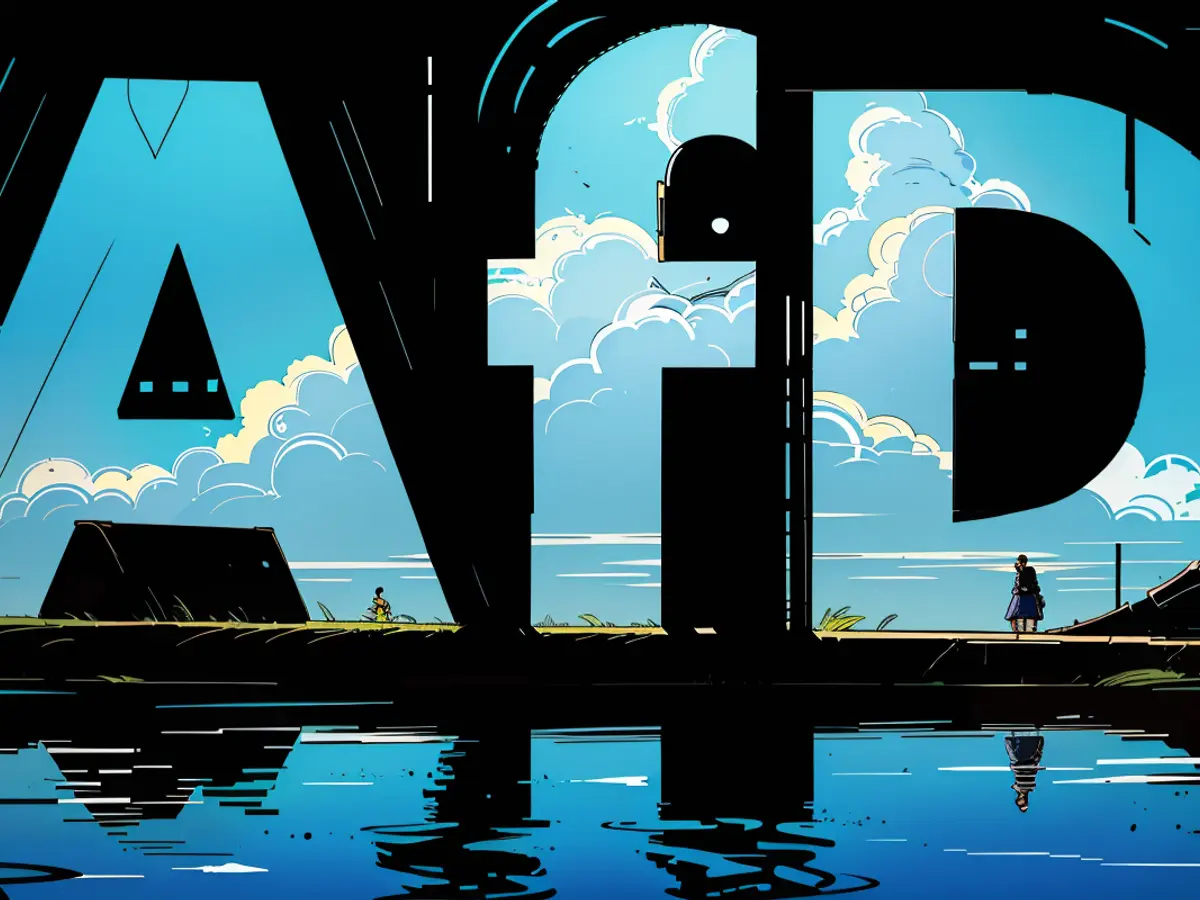Energy transition - Wind power at sea - from pioneering work to a boom industry?
Pilot Falko Baguhl steers his helicopter safely towards its destination in the middle of the North Sea, around 15 kilometers north of the island of Borkum: approaching the Riffgat offshore wind farm. Through the open side door, the helicopter can be seen slowly coming in to land between the wind turbines. Below, the North Sea waves glisten in the bright sunlight. On this late fall day, Baguhl and his co-pilot from the Emden-based company Heliservice are taking three technicians from Omexom to the wind farm's transformer platform for maintenance work. Normally, technicians and helicopter crews are alone during such maneuvers - this time the companies make an exception for a team of reporters.
When the landing platform of the transformer station is reached and the rotor blades of the red and yellow helicopter are stationary, the technicians get straight to work - a generator has reported a fault. Their boss Irina Lucke, Managing Director of Omexom Renewable Energies Offshore, a maintenance service provider, has flown out with them that day. The manager has been with the German offshore industry since its beginnings 17 years ago. In 2010, she took over the technical project management for the Riffgat wind farm, the first commercial German wind farm in the North Sea.
More pioneering work than a profit project
"When we started here, we only saw the sea around us," Lucke recalls of the construction work in 2012, pointing from the parapet to the open North Sea. At the time, the Riffgat wind farm with 30 turbines was more pioneering work than a profit project. The farm can supply around 120,000 households with electricity. Now, she says, there is a "spectacular horizon" here. Dozens of wind turbines gleam in the distance. "We've done it in ten years and nothing has happened in three of those years, so in seven years net," says Lucke with audible pride. There is an "incredible energy" in the market. "It's going steeply uphill."
Around 1500 wind turbines installed
However, there is still a huge gap between expansion targets and the actual situation. Since the first wind farm was commissioned, 24 more have been built in the North and Baltic Seas. Since then, 1563 wind turbines with a generation capacity of around 8.3 gigawatts have been spinning off the German coasts. This is roughly equivalent to the output of eight large nuclear power plants. The latest wind farm, Arcadis Ost 1, with 27 wind turbines on the Baltic Sea off Rügen, is due to be commissioned in a few days on December 5.
Offshore wind power has weakened recently. The expansion was not attractive enough, and for the first time no new turbines were built at sea in 2021. "A growing sector of the economy has been driven against the wall," says Stefan Thimm, Managing Director of the German Offshore Wind Energy Association (BWO), referring to the government years of the CDU/CSU and SPD coalition. That is why more speed is now needed. However, due to lead times, the largest expansion will not take place until 2028.
In fact, politicians want to push ahead with the expansion in order to achieve the climate targets and to cover the demand arising from the phase-out of coal and nuclear energy. In April of this year, the countries bordering the North Sea agreed to develop the sea into "Europe's green power plant". By 2050, the coastal states want to install offshore wind turbines with a capacity of at least 300 gigawatts. Germany raised its offshore targets last year and announced that it was aiming for at least 30 gigawatts by 2030 and at least 70 gigawatts by 2045.
Conservationists fear industrialization
While the offshore industry is in the starting blocks, conservationists are very concerned about the pace set. The German Nature and Biodiversity Conservation Union (Nabu) recently criticized the expansion target of 70 gigawatts in a statement and warned of "reckless industrialization". The North Sea is already overused by fishing, shipping, raw material extraction, platforms and pipelines, it said.
Omexom manager Lucke admits that there needs to be a "sensible dialog" between the offshore industry, nature conservation and fishing in the future. "Discussions take place far too rarely." The industry is determined to avoid a dwindling acceptance of the expansion of wind power on land.
Global race for resources
The industry sees a further challenge in the global competition that the offshore industry faces. "We don't have as many installation ships as we need. We don't have as many cable plants or as many turbine plants," explains Lucke. And then there is also a major problem with skilled workers. "We have to make sure that we don't cannibalize each other," warns the manager. Every renewable energy has its raison d'être and is looking for personnel.
The offshore industry is not only short of skilled workers in the North Sea, but also on land. "We are constantly looking for staff," says Jens Oliver Freiland, head of Heliservice, the company that flew the technicians to the transformer platform. The company once started out with two helicopters in Emden, now there are eight.
Searching for personnel throughout Europe
The lack of personnel and excessive bureaucracy are slowing down the spirit of optimism, says Freiland. Not only pilots, but above all highly specialized aircraft mechanics are difficult to find. It can take up to eight years for a mechanic to fully arrive on the job after training and collecting licenses. "You become a heart surgeon in the same time." The offshore industry is therefore also insisting on more immigration. The helicopter service has long been looking for personnel throughout Europe.
More and more helicopter flights will be needed in the future, says Freiland. "We are already seeing a trend towards increased flight volumes as wind farms change their logistics concepts." Furthermore, says Freiland, wind farms in the North Sea will soon be built so much further out than the Riffgat wind farm close to the coast that they will only be easily accessible by helicopter.
Lesen Sie auch:
Source: www.stern.de








